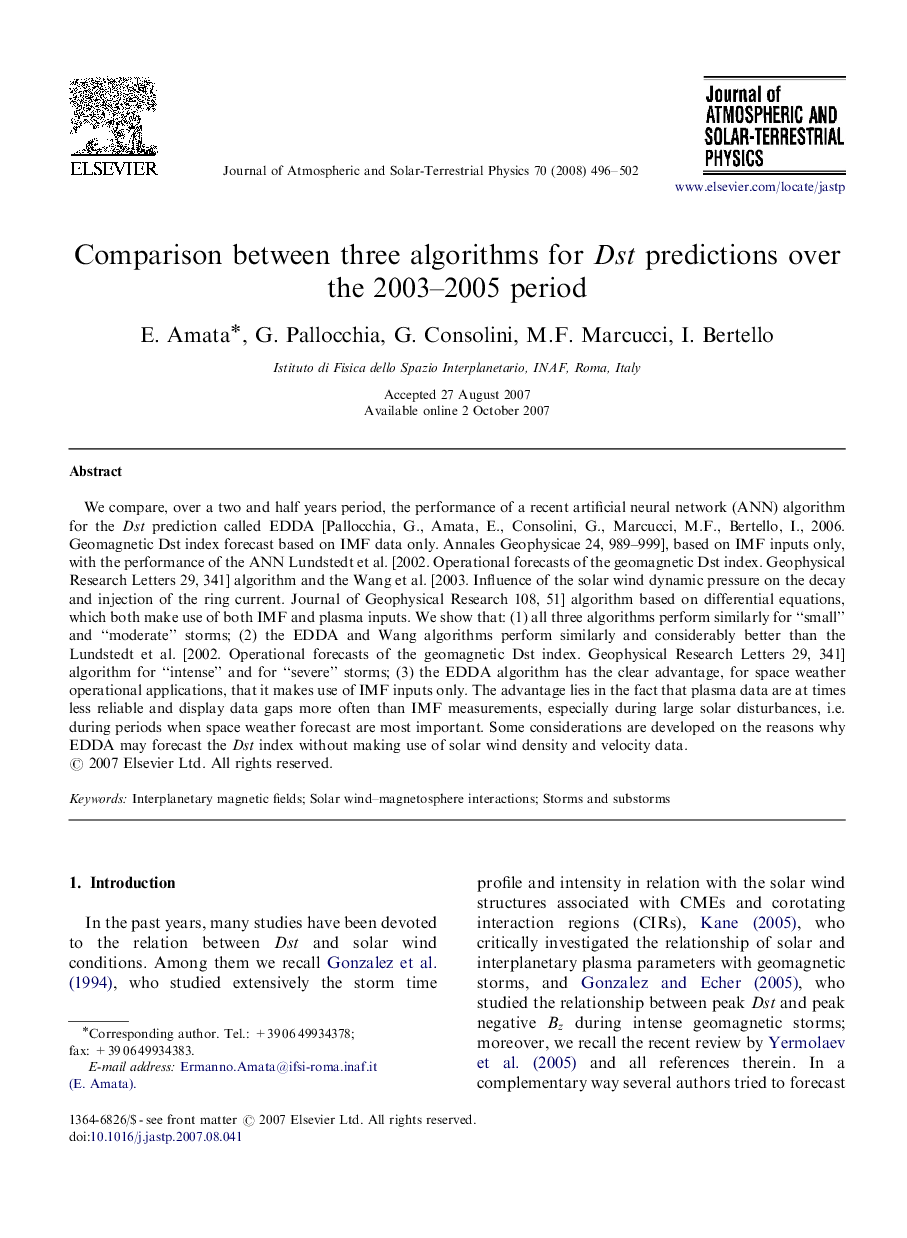| Article ID | Journal | Published Year | Pages | File Type |
|---|---|---|---|---|
| 1778176 | Journal of Atmospheric and Solar-Terrestrial Physics | 2008 | 7 Pages |
We compare, over a two and half years period, the performance of a recent artificial neural network (ANN) algorithm for the Dst prediction called EDDA [Pallocchia, G., Amata, E., Consolini, G., Marcucci, M.F., Bertello, I., 2006. Geomagnetic Dst index forecast based on IMF data only. Annales Geophysicae 24, 989–999], based on IMF inputs only, with the performance of the ANN Lundstedt et al. [2002. Operational forecasts of the geomagnetic Dst index. Geophysical Research Letters 29, 341] algorithm and the Wang et al. [2003. Influence of the solar wind dynamic pressure on the decay and injection of the ring current. Journal of Geophysical Research 108, 51] algorithm based on differential equations, which both make use of both IMF and plasma inputs. We show that: (1) all three algorithms perform similarly for “small” and “moderate” storms; (2) the EDDA and Wang algorithms perform similarly and considerably better than the Lundstedt et al. [2002. Operational forecasts of the geomagnetic Dst index. Geophysical Research Letters 29, 341] algorithm for “intense” and for “severe” storms; (3) the EDDA algorithm has the clear advantage, for space weather operational applications, that it makes use of IMF inputs only. The advantage lies in the fact that plasma data are at times less reliable and display data gaps more often than IMF measurements, especially during large solar disturbances, i.e. during periods when space weather forecast are most important. Some considerations are developed on the reasons why EDDA may forecast the Dst index without making use of solar wind density and velocity data.
